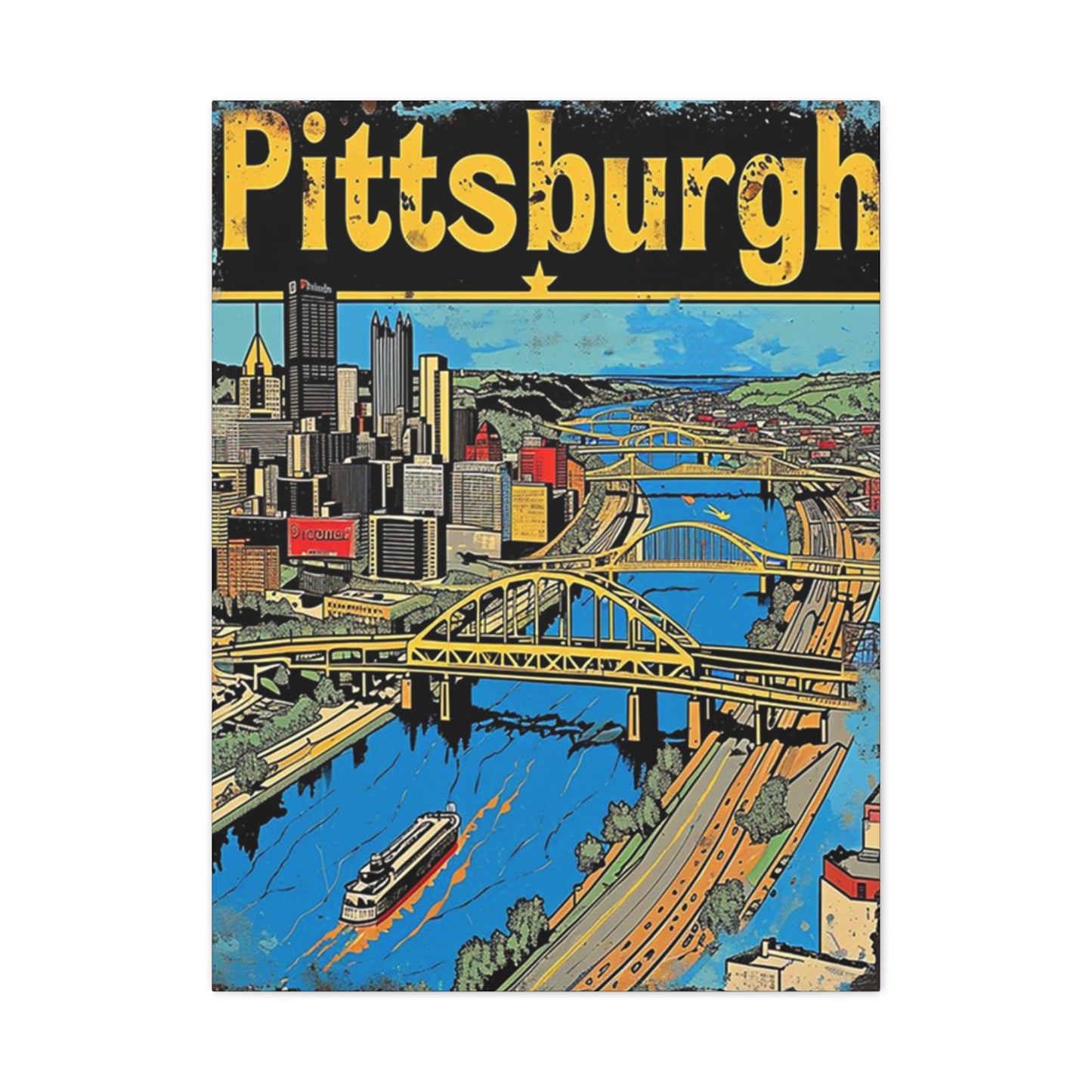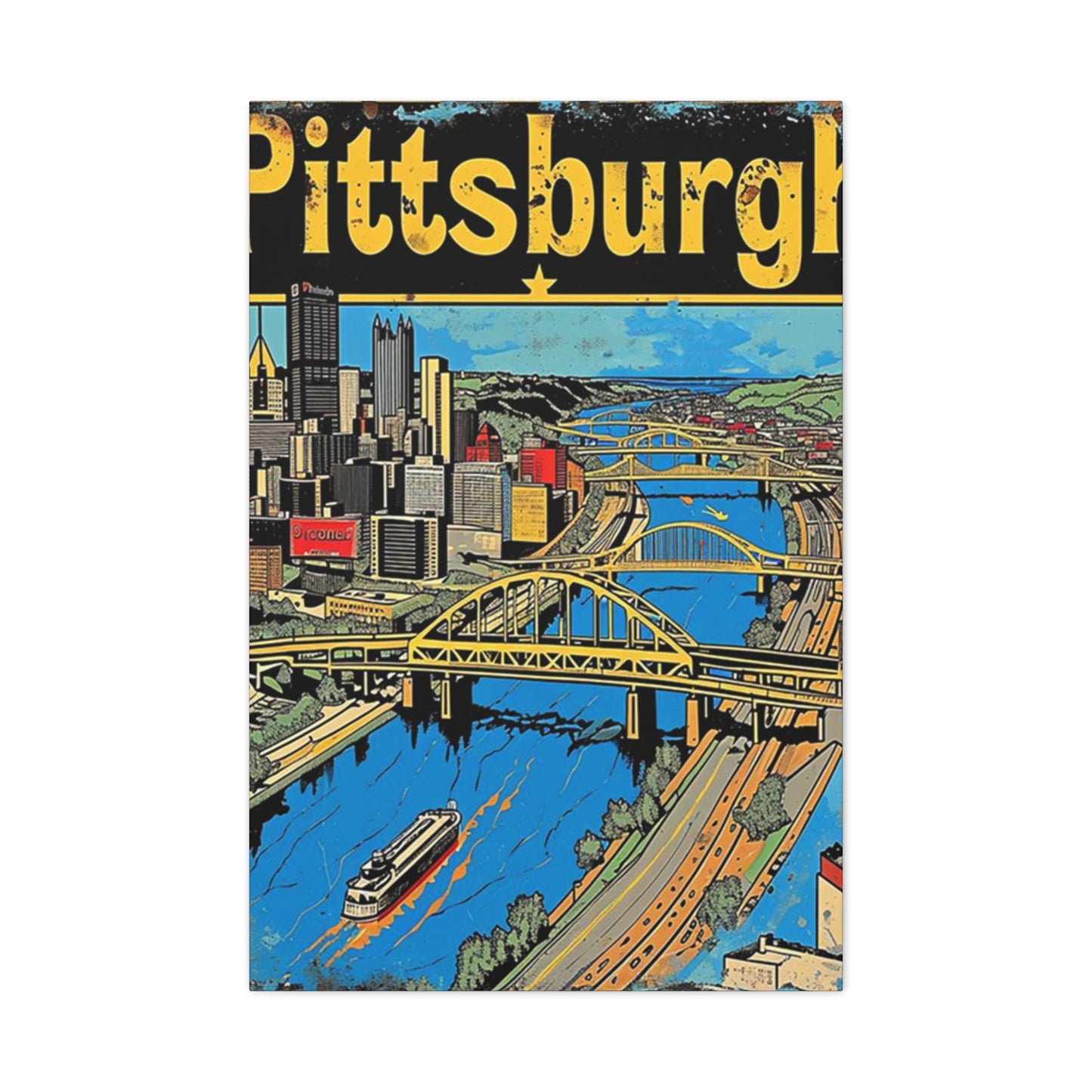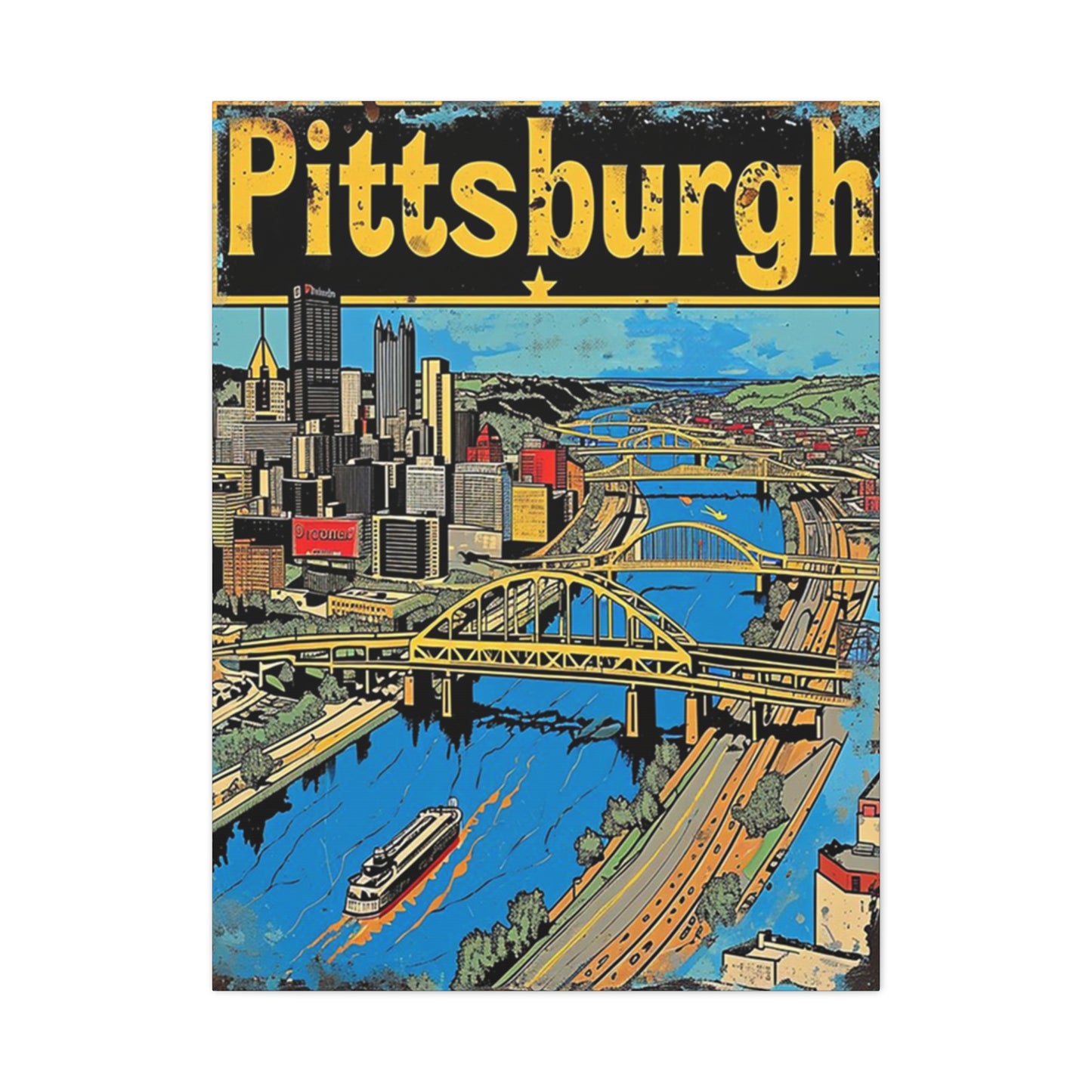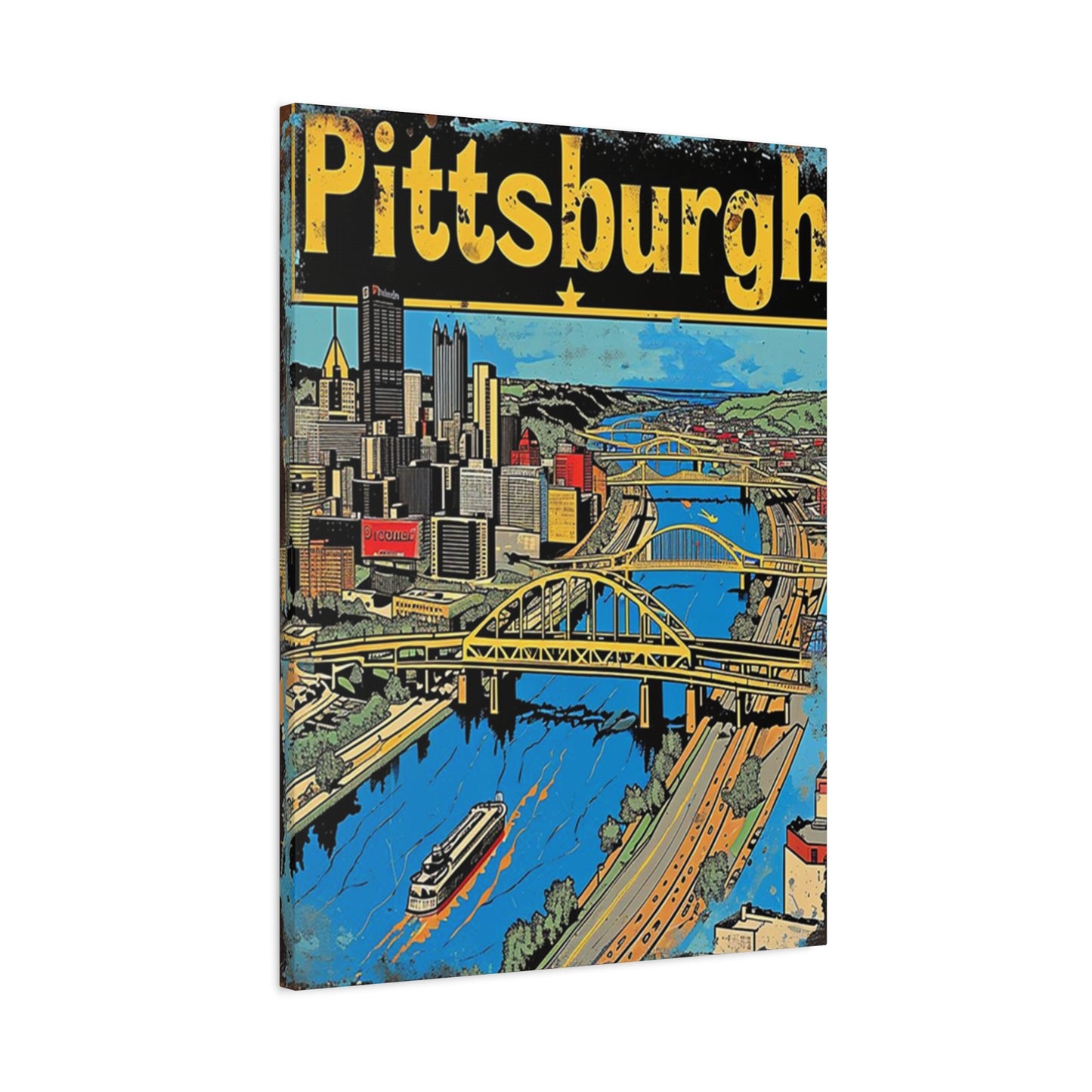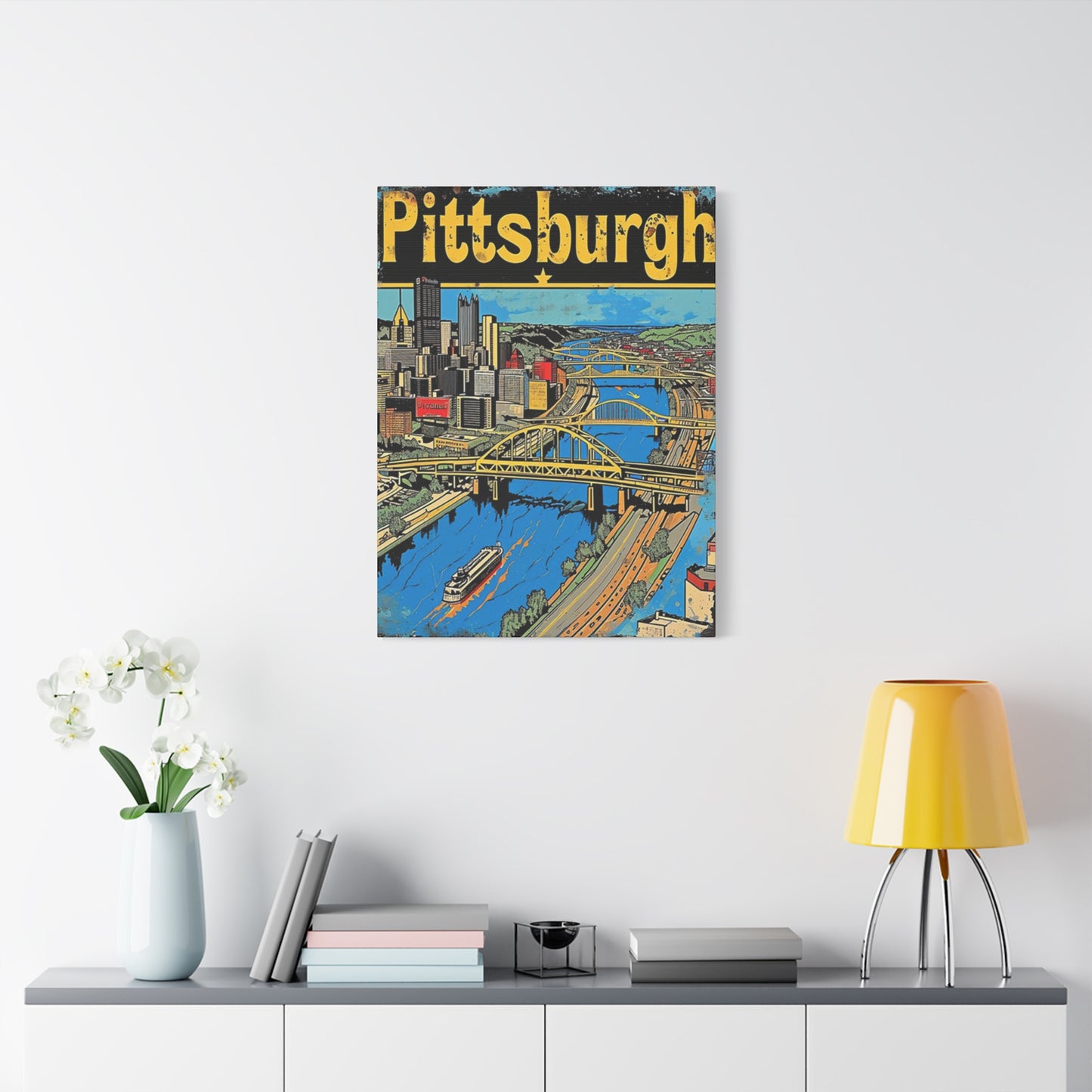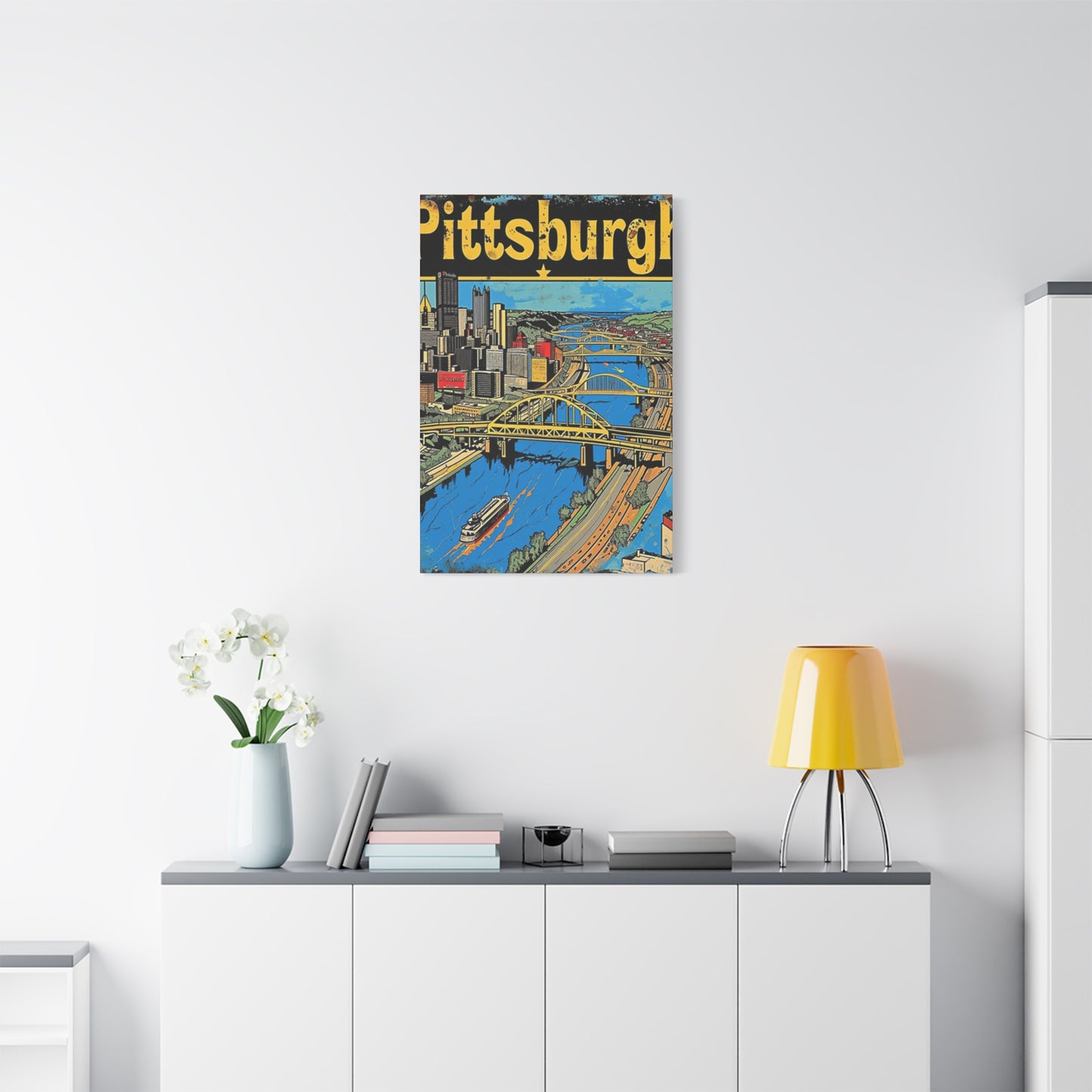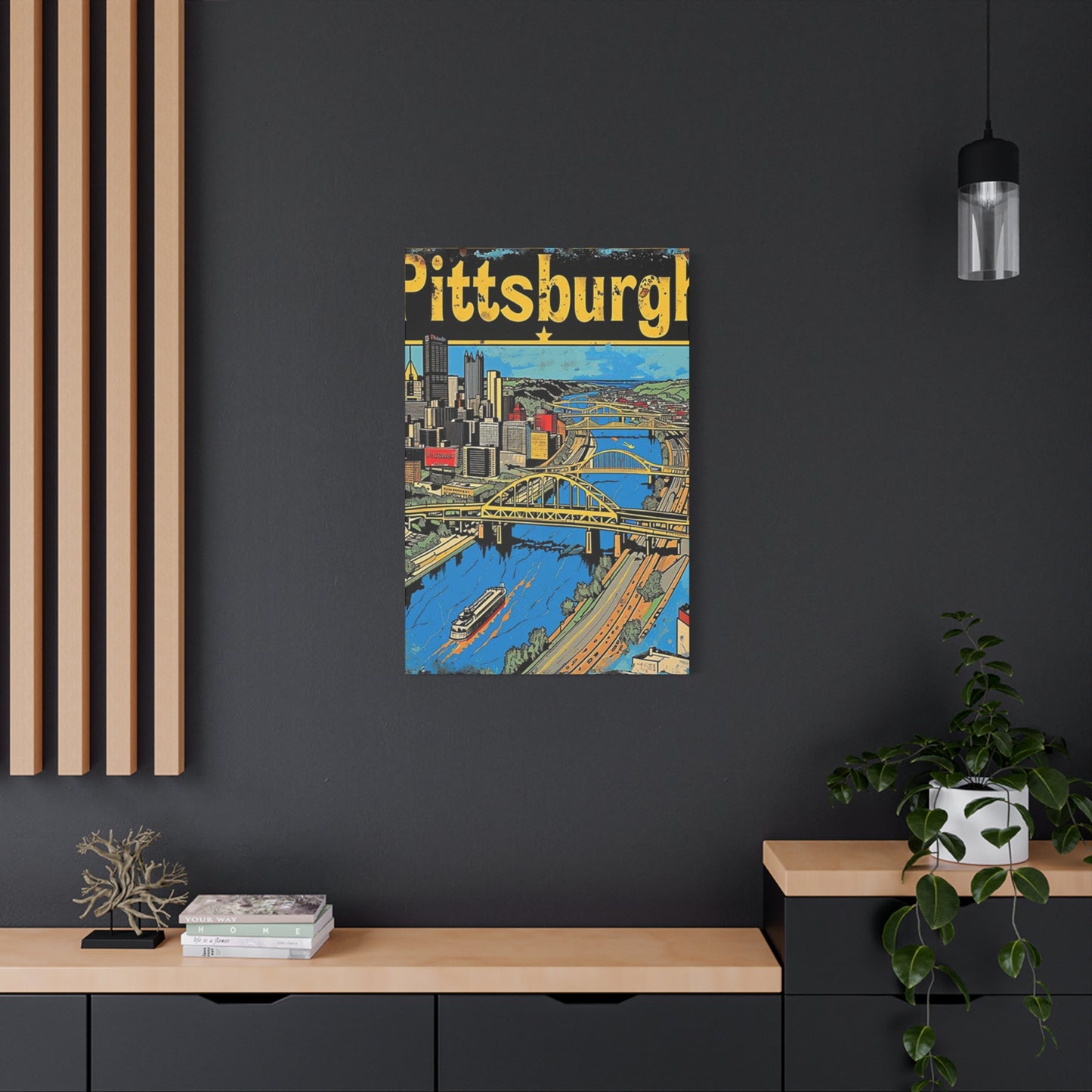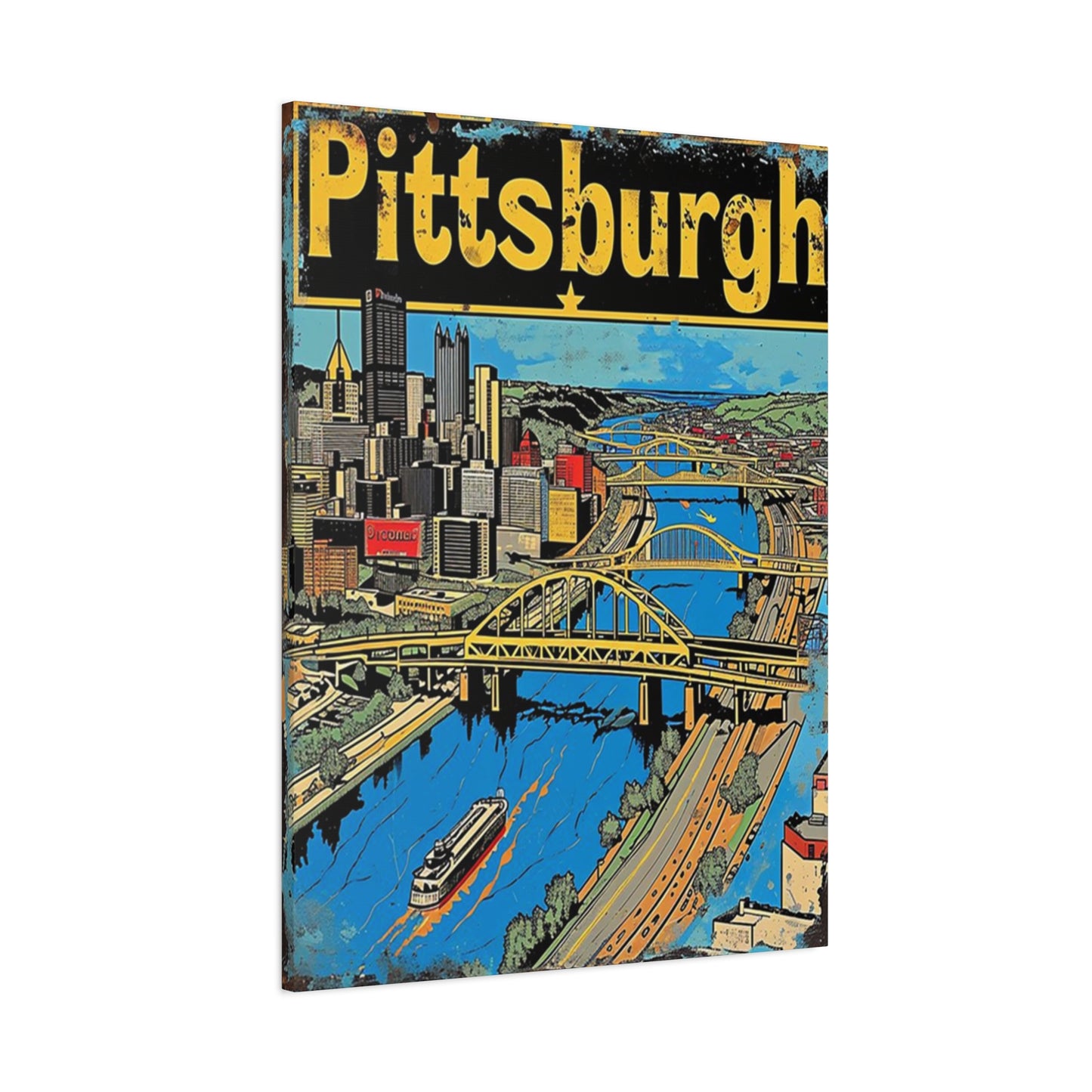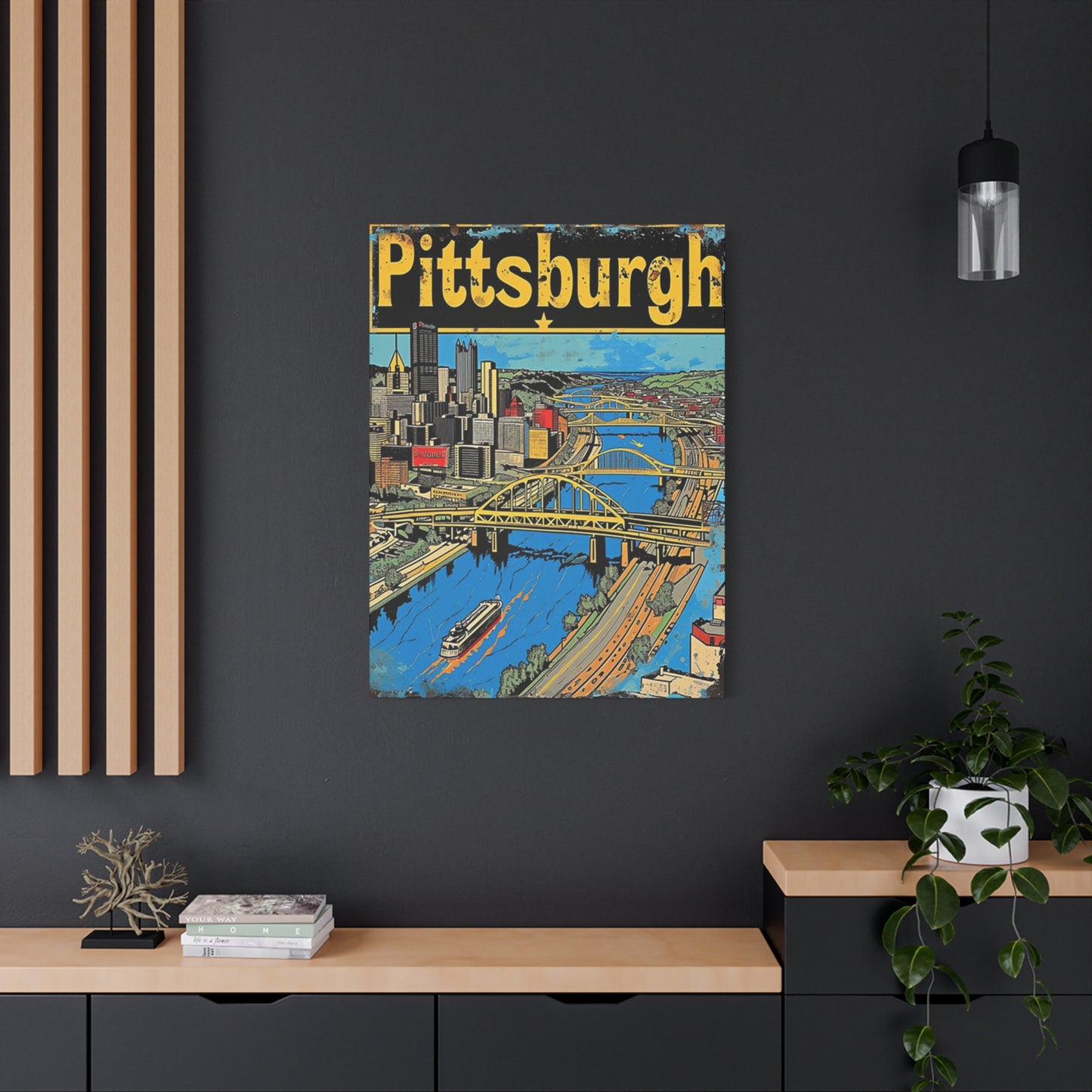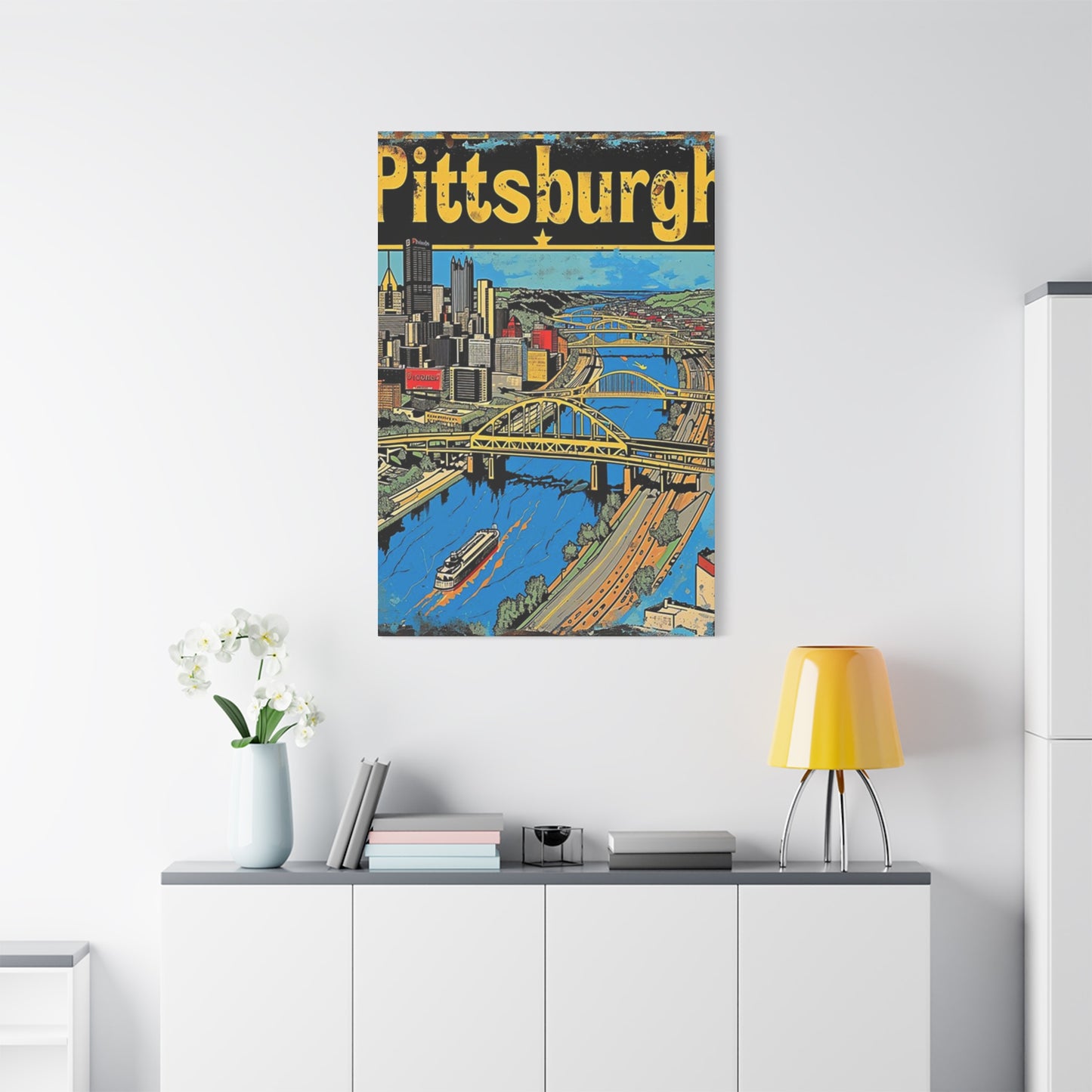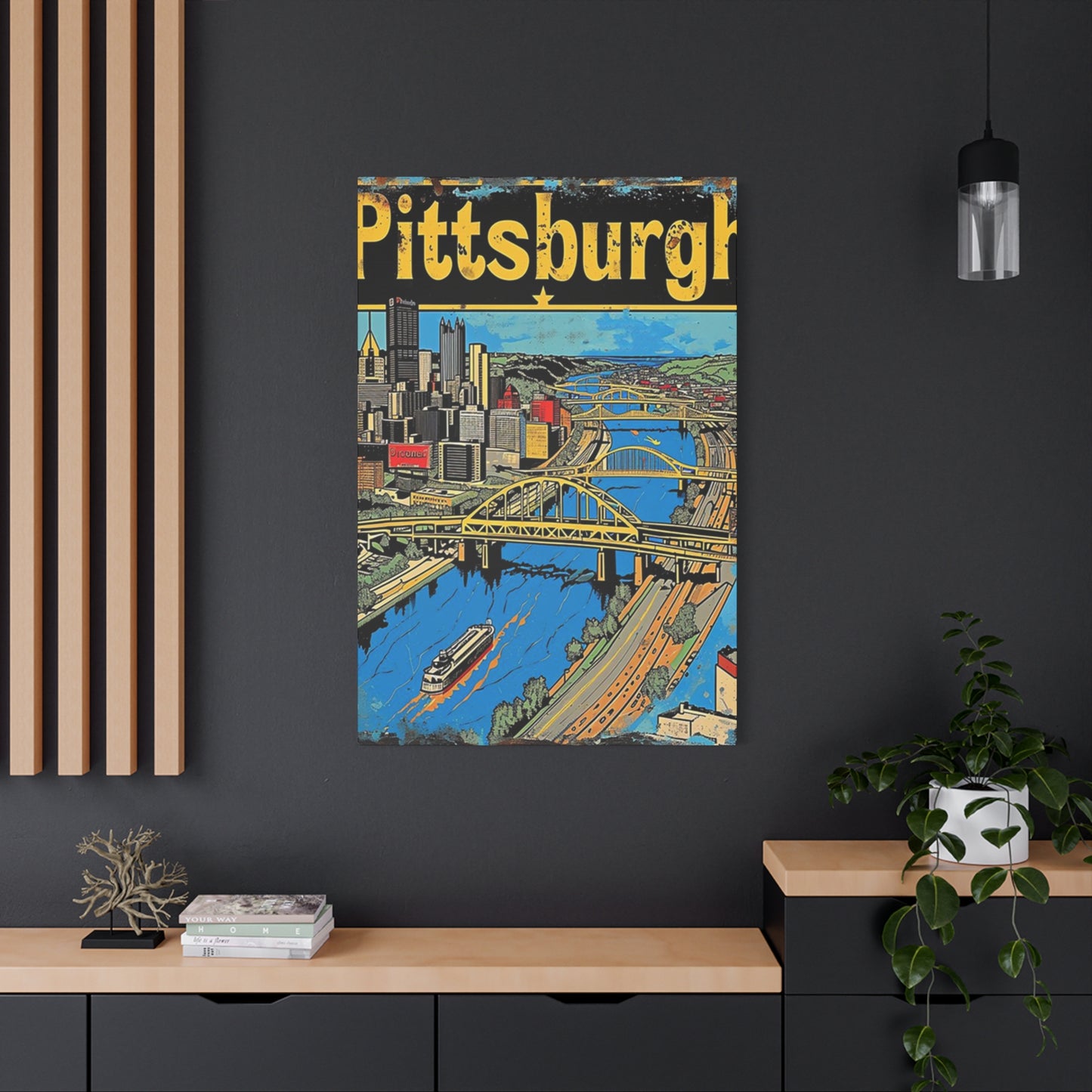Exploration of Urban Artistry and Industrial Heritage: Pittsburgh Graffiti Steel Bridge Poster Wall Art
The steel city has long been recognized as a beacon of industrial achievement and cultural transformation. Throughout decades of evolution, the metropolitan landscape has embraced artistic expression that celebrates both its manufacturing heritage and contemporary creative spirit. Urban artwork featuring iconic structures has become increasingly popular among collectors, interior designers, and residents who appreciate the intersection of historical preservation and modern aesthetic sensibilities. These visual representations capture the essence of a community that has successfully transitioned from heavy industry to a diverse economy while maintaining its distinctive character.
The popularity of industrial-themed artwork continues to grow as more individuals seek meaningful connections to authentic urban environments. Canvas reproductions and poster presentations of street art on metallic infrastructure offer viewers an opportunity to bring elements of city life into residential and commercial spaces. This form of decorative expression resonates particularly well with those who value authenticity, raw beauty, and the unfiltered energy of metropolitan settings. The textured surfaces and bold colors typical of spray-painted creations provide visual interest that complements various interior design philosophies from contemporary minimalism to industrial chic.
Street Art on Industrial Infrastructure
The evolution of spray-painted expression on architectural structures represents a fascinating chapter in contemporary cultural history. During the late twentieth century, urban areas across North America experienced significant economic transitions that left many industrial facilities underutilized or abandoned. These spaces became canvases for creative individuals seeking to make their mark on the urban landscape. The steel frameworks that once supported manufacturing processes became outdoor galleries where artists could display their talents without the constraints of traditional exhibition spaces.
The transformation of utilitarian structures into celebrated art pieces reflects broader societal shifts regarding public space and creative expression. What was once considered vandalism has increasingly been recognized as legitimate artistic practice worthy of preservation and celebration. Many municipalities now actively support certain forms of public art while implementing programs that distinguish between sanctioned creative projects and destructive tagging. This nuanced approach acknowledges the cultural value of thoughtful artistic interventions while protecting property rights and community standards.
The photographic documentation of these artistic installations has created an entirely new category of collectible imagery. Professional and amateur photographers alike have captured striking compositions that showcase the interplay between industrial architecture, colorful artistic expression, and natural elements like sky and water. These photographs have been transformed into various commercial products including canvas reproductions, framed posters, and digital downloads that allow people worldwide to appreciate and own representations of this distinctive artistic movement.
Artistic Characteristics of Spray Painted Expressions on Metal Surfaces
The visual qualities of aerosol artwork on steel frameworks possess distinctive characteristics that differentiate this medium from traditional painting approaches. The application of spray paint creates unique textures, color gradations, and layering effects that cannot be replicated through brush techniques. Artists working with aerosol cans develop specialized skills for controlling pressure, distance, and movement to achieve their desired effects. The metallic substrate adds another dimension to the final appearance, sometimes allowing the underlying material to show through or influence the color characteristics of the applied paint.
Color selection in urban artwork tends toward bold, high-contrast palettes that command attention even from considerable distances. Primary colors, neon accents, and stark black outlines frequently appear in compositions designed to be viewed from passing vehicles or across wide spaces. These chromatic choices ensure visibility and impact in environments where competing visual stimuli abound. The weathering process adds additional character as environmental factors create natural patinas and alterations that some observers find enhancing rather than diminishing to the overall aesthetic appeal.
Compositional approaches in street art range from representational imagery to abstract geometric patterns and text-based designs. Many artists incorporate elements that reference local culture, history, or current social issues, creating works that resonate specifically with community members while remaining accessible to outside observers. The scale of infrastructure-based artwork often exceeds what would be practical in gallery settings, allowing for dramatic visual statements that transform the character of entire neighborhoods or districts.
Capturing Industrial Art Through Photography
The photographic documentation of urban artwork requires specific technical considerations and artistic sensibilities. Lighting conditions play a crucial role in determining how colors appear and how textures are revealed in the final image. Many photographers prefer the soft, directional light of early morning or late afternoon when shadows add depth and dimension to architectural features. Overcast conditions can provide even illumination that prevents harsh highlights and deep shadows, allowing the artwork itself to remain the primary focus without competing with dramatic lighting effects.
Compositional choices significantly impact how viewers experience photographed street art. Some photographers opt for comprehensive views that place the artwork within its broader environmental context, showing surrounding structures, sky, and foreground elements that provide scale and setting. Alternative approaches involve tighter framing that isolates specific portions of the artwork, emphasizing color relationships, textural qualities, or particular design elements. Both strategies offer valid interpretations that serve different aesthetic purposes and appeal to varying collector preferences.
Technical settings including aperture, shutter speed, and sensitivity adjustments must be carefully considered to achieve optimal results. Photographers often use relatively small apertures to ensure that both foreground and background elements maintain acceptable sharpness, particularly when architectural elements extend across substantial depth ranges. The choice of lens focal length influences perspective characteristics, with wide-angle options exaggerating the scale of nearby structures while telephoto selections compress spatial relationships and allow selective framing of distant elements.
Converting Photography into Gallery-Quality Canvas Reproductions
The transformation of photographic captures into canvas artwork involves sophisticated production processes that preserve image quality while adapting to the physical characteristics of textile substrates. Modern digital printing technologies enable the reproduction of photographs with exceptional color accuracy and detail resolution that rivals traditional photographic printing methods. Specialized printers designed for canvas output utilize pigment-based inks that offer superior longevity compared to dye-based alternatives, ensuring that reproductions maintain their visual appeal for decades when properly displayed and maintained.
Canvas selection influences both the appearance and durability of finished reproductions. Gallery-wrap techniques involve stretching the printed canvas around wooden framework, creating a three-dimensional object that can be displayed without additional framing. The depth of these frameworks varies from thin profile options that maintain a low-profile appearance to substantial depths that create more dramatic shadow effects and physical presence. Some producers offer museum-quality cotton canvases while others utilize polyester blends that provide different textural characteristics and dimensional stability properties.
Coating applications provide protective benefits while influencing the final surface characteristics of canvas reproductions. Matte finishes minimize reflective glare and create appearances similar to traditional painted works, while satin and gloss options add depth to dark values and make colors appear more vibrant and saturated. UV-protective coatings extend the lifespan of prints by filtering harmful wavelengths that cause fading and color shifts over time. These finishing treatments represent the final step in creating reproductions that successfully translate photographic captures into tangible artwork suitable for residential and commercial installation.
Paper Poster Alternatives for Budget-Conscious Collectors
Not all admirers of industrial urban artwork require the permanence and physical presence of canvas reproductions. Paper-based poster presentations offer accessible entry points for those exploring decorative options or working within constrained budgets. Modern printing technologies produce posters with impressive color fidelity and detail reproduction using various paper stocks ranging from basic grades suitable for temporary display to premium selections that approach the quality of fine art prints.
The selection of appropriate paper characteristics depends on intended display duration and environmental conditions. Heavyweight papers with acid-free formulations resist yellowing and deterioration, making them suitable for extended display periods. Surface finishes including matte, satin, and glossy options influence how light interacts with the printed image, with matte surfaces reducing glare while glossy finishes maximize color saturation and contrast. Some premium posters incorporate metallic or textured papers that add tactile and visual dimensions not present in standard printing substrates.
Framing considerations significantly impact the final presentation quality of paper posters. Simple clip frames provide economical protection while allowing easy replacement if desired, making them ideal for rotating displays or temporary installations. Traditional frames with matting create more formal presentations that elevate posters to artwork status, particularly when quality materials and professional assembly techniques are employed. Regardless of framing approach, protection from direct sunlight and moisture exposure remains essential for preserving paper-based artwork throughout its intended display lifetime.
Interior Design Applications for Industrial Urban Imagery
The incorporation of street art imagery into interior environments requires thoughtful consideration of existing design elements and spatial characteristics. Industrial-themed artwork naturally complements spaces that feature exposed architectural elements including brick walls, concrete surfaces, wooden beams, and metal fixtures. The raw, authentic character of spray-painted compositions harmonizes with materials that celebrate functionality and honest expression of structural components rather than concealing them behind decorative finishes.
Color coordination between artwork and surrounding elements creates visual cohesion that enhances overall aesthetic impact. The bold palettes typical of urban artwork can either complement existing color schemes or serve as dramatic accent pieces that introduce energizing contrast. Rooms dominated by neutral tones benefit from colorful artistic injections that prevent monotony and establish focal points, while spaces already featuring strong colors require more careful selection to avoid overwhelming visual chaos. Professional designers often recommend selecting artwork that includes at least one color present elsewhere in the space to create subtle connections that unify diverse elements.
Scale relationships between artwork and architectural features dramatically influence spatial perception and compositional balance. Large-scale reproductions command attention and can anchor furniture arrangements while creating the impression of expanded space through their visual weight. Conversely, modestly sized pieces work well in intimate settings or as components of gallery wall arrangements that combine multiple complementary images. The physical depth of canvas presentations adds another dimensional consideration, with substantial projection creating more dramatic shadow patterns and sculptural presence compared to flush-mounted alternatives.
Urban Art in Living Environments
The presence of artwork depicting industrial landscapes and street art influences occupant psychology through multiple pathways. Color psychology research demonstrates that different hues trigger distinct emotional and physiological responses, with warm tones generally promoting energy and sociability while cool colors encourage calm and contemplation. The bold, saturated colors typical of spray-painted artwork tend to create stimulating environments that support creative thinking and active engagement rather than passive relaxation.
Beyond chromatic effects, the subject matter itself carries psychological significance. Representations of urban environments may evoke nostalgia for past experiences, create connections to beloved locations, or express identification with metropolitan culture and values. For individuals with personal or family histories connected to industrial work, imagery featuring steel structures might represent meaningful links to heritage and the dignity of manufacturing labor. Alternatively, younger collectors might appreciate the rebellious energy and countercultural associations of street art without direct connections to industrial history.
The authenticity and rawness of spray-painted artwork contrasts sharply with the polished perfection of commercial photography and digital art, offering psychological benefits associated with genuine expression and imperfection. In an increasingly digital and curated visual environment, the organic irregularities and weathered characteristics of infrastructure-based artwork provide refreshing authenticity. This quality resonates particularly strongly with individuals seeking to create living environments that reflect genuine character rather than aspirational staging designed primarily for social media presentation.
Commercial Applications in Business and Hospitality Settings
Business environments increasingly incorporate urban art imagery to create distinctive atmospheres that differentiate their facilities from competitors and communicate brand values. Restaurants with industrial themes frequently feature street art reproductions to reinforce their design concepts and create immersive experiences for patrons. The energetic, contemporary character of spray-painted artwork appeals to younger demographics and conveys progressive, creative brand identities that distinguish establishments from more traditional competitors.
Office environments benefit from carefully selected artwork that stimulates creativity while maintaining professional appropriateness. Urban imagery featuring colorful abstract patterns or architectural studies provides visual interest without controversial content that might alienate clients or employees with diverse sensibilities. The conversation-generating qualities of distinctive artwork create natural icebreakers for business meetings and help clients form memorable associations with company identities. Progressive technology firms and creative agencies particularly embrace industrial urban aesthetics that signal innovation and nonconformist thinking.
Hospitality applications including hotels, coffee shops, and entertainment venues utilize urban art reproductions to establish memorable aesthetic identities and create photogenic environments that encourage social media sharing. The visual distinctiveness of well-executed installations provides marketing value as guests photograph and share their experiences online, effectively creating organic promotional content. Property managers recognize that distinctive artistic programs contribute to positive reviews and repeat patronage by creating experiences that transcend basic functional requirements and deliver memorable aesthetic engagement.
Preservation Considerations for Long-Term Display
Maintaining the visual quality of artwork reproductions requires understanding environmental factors that contribute to deterioration. Light exposure represents the primary threat to print longevity, with both visible and ultraviolet wavelengths causing chemical changes in inks and substrates that manifest as fading, color shifts, and general degradation. Direct sunlight delivers particularly intense exposure that can noticeably alter appearance within months, while indirect natural light and artificial illumination produce more gradual effects that accumulate over years or decades depending on intensity and duration.
Temperature and humidity fluctuations stress canvas and paper substrates through expansion and contraction cycles that gradually weaken fibers and may cause inks to crack or delaminate. Stable environmental conditions within moderate ranges prevent most deterioration mechanisms, making climate-controlled indoor spaces ideal for valuable reproductions. Humidity extremes pose particular risks, with excessive moisture promoting mold growth and substrate weakening while very dry conditions make materials brittle and susceptible to mechanical damage.
Physical protection from contact and impact prevents scratches, tears, punctures, and other mechanical damage that diminishes aesthetic appeal and monetary value. Canvas reproductions with protective coatings resist minor contact damage better than uncoated alternatives, though neither should be touched regularly or cleaned with abrasive materials. Dusting with soft, dry cloths removes particulate accumulation without risking liquid damage, while more extensive cleaning should be approached cautiously using methods appropriate for the specific materials and coatings present. Professional conservation services provide options for repairing damaged artwork when DIY approaches risk causing additional harm.
Authenticating and Evaluating Reproduction Quality
The market for urban art reproductions includes significant quality variation that impacts both aesthetic satisfaction and long-term value retention. Discriminating collectors develop evaluation skills that allow them to distinguish superior productions from inferior alternatives. Resolution and detail preservation represent fundamental quality indicators, with excellent reproductions maintaining sharpness and clarity even when examined closely. Pixelation, blurriness, or loss of fine details signal inadequate image resolution or poor printing processes that compromise visual fidelity.
Color accuracy relative to source material varies substantially among producers and printing methodologies. High-quality reproductions employ color management systems that ensure faithful translation of photographic captures to printed output, maintaining the intended chromatic relationships and tonal ranges. Inferior productions may display color casts, compressed tonal ranges, or inaccurate hue representations that fail to capture the character of original subjects. When possible, comparing reproductions to reference images or other examples helps reveal color handling quality and consistency.
Construction quality affects both appearance and durability of finished products. Canvas reproductions should exhibit tight, uniform stretching without wrinkles, sagging, or corner distortions. Wooden frameworks should utilize properly dried lumber that resists warping and incorporate secure corner joints that maintain structural integrity. Coating applications should appear uniform without drips, bubbles, or uncoated areas that would compromise protective benefits. Attention to these construction details distinguishes professional-grade reproductions from hastily produced alternatives intended for temporary decorative purposes rather than lasting aesthetic value.
Customization Options for Personalized Artistic Expression
Many reproduction producers offer customization services that allow customers to adapt standard products to specific preferences and requirements. Size modifications represent the most common customization request, with productions scaled to fit available wall spaces or achieve desired visual impact. Professional reproductions maintain aspect ratios during scaling to prevent distortion, though some applications may require cropping or selective framing to accommodate non-standard dimensions or eliminate less desirable portions of source images.
Color adjustments allow customers to modify chromatic characteristics to better coordinate with existing interior palettes or achieve specific aesthetic effects. These modifications range from subtle refinements that enhance particular hues to dramatic alterations that transform overall color schemes while maintaining recognizable compositions. Black and white conversions eliminate chromatic information entirely, creating high-contrast presentations that emphasize form, texture, and tonal relationships. Sepia or other monochromatic treatments provide vintage character that appeals to collectors seeking period-appropriate aesthetic qualities.
Alternative substrate and finishing options expand creative possibilities beyond standard offerings. Metallic prints utilize aluminum or other metal surfaces that create unique visual characteristics including enhanced color vibrancy and dimensional effects. Acrylic face-mounting sandwiches prints between backing materials and clear acrylic sheets, creating luminous presentations with substantial depth and contemporary appearance. Wood-mounted options transfer images to natural wood substrates, incorporating grain patterns into the final aesthetic and creating rustic character that complements certain design philosophies. These specialized treatments typically command premium prices but deliver distinctive results unavailable through conventional printing approaches.
Considerations and Investment Potential
The pricing of urban art reproductions reflects multiple factors including production costs, edition sizes, artist reputation, and market demand. Mass-produced posters represent the most economical options, with basic prints available at minimal cost while premium examples on specialty papers command moderately higher prices. Canvas reproductions typically cost substantially more due to material expenses, labor-intensive stretching processes, and coating applications. Limited edition productions with authentication documentation and artist signatures attract collectors willing to pay premiums for exclusivity and potential appreciation.
Investment potential varies dramatically depending on edition type and artist recognition. Open edition reproductions suitable for decorative purposes rarely appreciate financially since supply remains unlimited and production costs typically decline over time as printing technologies improve. Limited editions from recognized photographers or featured in significant exhibitions may develop secondary markets where prices exceed original retail costs. Factors supporting value retention include edition size limitations, documentation quality, subject matter significance, and artist career trajectory.
Budget allocation for artwork should consider both acquisition costs and ancillary expenses including framing, shipping, and installation. Large-format reproductions may require professional hanging services to ensure secure mounting and proper positioning, particularly when substantial weight or precise alignment is critical. Insurance coverage provides financial protection against damage or loss, with premiums reflecting declared values and risk factors including display location and building characteristics. These ongoing costs should factor into purchase decisions alongside initial acquisition expenses to ensure realistic total ownership cost understanding.
Sustainability Factors in Production
Growing environmental consciousness has prompted increased attention to the ecological impacts of art reproduction processes. Traditional printing methodologies utilize solvent-based inks that release volatile organic compounds during application and curing, contributing to air quality degradation and worker exposure concerns. Contemporary alternatives including latex and UV-cured inks substantially reduce or eliminate these emissions while maintaining color quality and durability characteristics. Conscientious producers prioritize these environmentally preferable technologies despite potentially higher equipment costs and material expenses.
Substrate sourcing decisions influence environmental footprints through forestry practices, agricultural methods, and manufacturing processes. Canvas materials derived from organically grown cotton or sustainably harvested wood products minimize ecological damage compared to conventional alternatives involving intensive pesticide applications or destructive logging practices. Recycled content materials divert waste from landfills while reducing demand for virgin resources, though quality considerations sometimes necessitate balancing environmental benefits against performance requirements.
Packaging and shipping practices contribute significantly to overall environmental impacts through material consumption and transportation emissions. Minimal packaging approaches using recycled and recyclable materials reduce waste generation, while consolidated shipping and efficient logistics planning decrease fuel consumption and associated emissions. Some producers implement carbon offset programs that fund environmental projects counterbalancing transportation impacts, though the effectiveness and authenticity of these programs varies substantially. Environmentally conscious consumers increasingly research and prioritize vendors demonstrating genuine commitment to sustainability rather than superficial greenwashing marketing claims.
Legal and Ethical Considerations in Urban Art Reproduction
The commercial exploitation of street art through photography and reproduction raises complex legal and ethical questions regarding intellectual property rights, artist compensation, and cultural appropriation. Photographers who capture images of public artwork generally own copyrights to their photographs regardless of underlying artwork authorship, creating layered rights situations where multiple parties may claim legitimate interests. Some jurisdictions recognize moral rights that allow artists to control certain uses of their work even after physical property rights transfer, though United States law provides minimal protections in this area compared to European counterparts.
Ethical practitioners seek to respect artist intentions and provide fair compensation when commercially exploiting creative work, even when legal obligations remain ambiguous. This might involve obtaining permission from identified artists, sharing revenues through licensing agreements, or avoiding reproduction of work by artists who explicitly oppose commercialization. The anonymity of many street artists complicates these efforts, as does the transient nature of outdoor artwork that may be painted over or removed shortly after creation. Reasonable observers disagree about appropriate ethical standards, with some arguing that public display constitutes implied permission for documentation while others maintain that commercial exploitation requires explicit consent.
Cultural sensitivity considerations arise when artwork addresses specific community experiences or incorporates imagery significant to particular cultural groups. Reproduction and sale by parties outside these communities may constitute problematic appropriation that extracts value without contributing to originating populations. Thoughtful engagement with these concerns involves researching artwork origins, supporting artists and communities directly when possible, and avoiding exploitation of marginalized populations for commercial benefit. These considerations extend beyond strict legal compliance to encompass broader questions of equity, respect, and responsible business practices.
Installation Techniques for Various Display Contexts
Proper installation ensures both aesthetic success and long-term security of displayed artwork. Wall surface assessment represents the critical first step, as different materials require specific fastening approaches and support capacities. Drywall installations typically utilize wall anchors that distribute weight across larger areas rather than relying solely on surface materials. Solid surfaces including concrete, brick, and wood studs provide more robust support but may require specialized tools and fasteners for secure mounting.
Leveling and positioning accuracy prevents the visual discomfort of skewed artwork while ensuring that compositional elements align as intended. Professional installers use laser levels and careful measurements to achieve precise positioning, particularly for multi-panel installations where alignment between separate pieces creates unified compositions. Consideration of viewing angles, furniture arrangements, and lighting positions during placement decisions maximizes visual impact and functional success. Mock-up techniques using templates or temporary attachments allow adjustment and refinement before permanent installation.
Hanging hardware selection balances strength requirements, aesthetic preferences, and installation convenience. D-rings, wire systems, sawtooth hangers, and French cleats each offer distinct advantages and limitations regarding weight capacity, adjustability, and visual presence. Gallery-wrap canvas without frames often utilize concealed mounting systems that maintain clean appearances without visible hardware. Heavy or valuable pieces may justify professional installation services that ensure proper support and minimize damage risks to both artwork and wall surfaces. Insurance considerations sometimes require professional installation documentation to maintain coverage validity.
Regional Variations in Urban Art Aesthetic Traditions
Street art practices and aesthetic preferences vary substantially across geographic regions, reflecting distinct cultural influences, historical developments, and community values. Metropolitan areas on each coast of North America developed recognizable stylistic traditions influenced by local demographics, artistic movements, and social conditions. East coast urban art often incorporated influences from hip-hop culture and political activism, emphasizing text-based compositions and figurative representations addressing social issues. West coast traditions demonstrated stronger connections to Mexican muralism and lowrider culture, featuring elaborate color work and technical precision.
Midwestern industrial regions developed aesthetic approaches reflecting manufacturing heritage and working-class identity. The combination of abundant infrastructure surfaces and economic transitions that left many facilities underutilized created ideal conditions for expansive artistic projects. Local artists often incorporated imagery referencing regional history, from steel production iconography to transportation heritage. These thematic elements create meaningful connections for residents while offering visitors insights into community character and values beyond generic tourist attractions.
International influences increasingly shape urban art practices as artists travel, communicate globally through digital platforms, and draw inspiration from diverse sources. European traditions emphasizing technical skill and composition balance, Latin American political engagement and bold color usage, and Asian calligraphic influences all contribute to evolving aesthetic vocabularies. This cross-pollination enriches artistic expression while sometimes prompting concerns about cultural homogenization and loss of distinctive regional character. Collectors interested in geographic specificity seek reproductions that capture authentic local character rather than generic urban imagery that could represent any metropolitan location.
Shaping Contemporary Production
Digital technologies continue revolutionizing art reproduction capabilities through improved resolution, expanded color gamuts, and innovative substrate compatibility. Modern wide-format printers achieve resolutions exceeding human visual discrimination thresholds, eliminating visible dot patterns even at close viewing distances. Expanded color spaces encompassing wider ranges than traditional printing processes enable more accurate reproduction of vivid hues including neon accents and saturated primaries common in street art. These technical improvements translate directly into superior reproduction quality that approaches or exceeds the visual fidelity of original photographs.
Color management systems ensure consistency across different devices and output technologies, allowing accurate preview of final appearance during design phases. Calibrated monitors, standardized color spaces, and sophisticated software algorithms minimize the color shifts and unexpected results that plagued earlier digital workflows. Proofing processes enable verification of color accuracy before committing to expensive large-format productions, reducing waste and ensuring customer satisfaction. These quality control measures represent significant advantages over traditional reproduction methods where verification required actual production runs.
Emerging technologies including augmented reality applications and interactive displays suggest future directions for art presentation and appreciation. Digital frames with high-resolution screens allow rotation through multiple images or even animation effects while maintaining artwork-like physical presence. Augmented reality applications enable virtual placement of artwork in spaces before purchase, helping customers visualize scale and aesthetic compatibility with existing environments. These innovations expand possibilities for artistic engagement while raising questions about the continuing relevance of static, physical reproductions in increasingly digital cultural landscapes.
Building Collections Around Thematic Cohesion
Collectors developing focused art collections around urban themes achieve greater aesthetic and intellectual satisfaction compared to random accumulation approaches. Thematic cohesion might emphasize geographic concentration, featuring various perspectives on particular cities or neighborhoods. This approach creates opportunities to observe how different artists and photographers interpret shared subject matter while developing comprehensive documentation of specific places. As collections grow, they potentially acquire historical significance as records of places and artistic practices at particular moments.
Stylistic consistency represents an alternative organizing principle, with collectors seeking works sharing aesthetic characteristics regardless of geographic origins. This might involve focusing on particular color palettes, compositional approaches, or technical methodologies. Collections organized around abstract geometric street art create different viewing experiences than those emphasizing representational murals or text-based work. Stylistic focus allows deeper engagement with particular artistic traditions and helps collectors develop refined discrimination abilities within chosen specialties.
Medium-based collecting emphasizes production methods and physical characteristics, with some collectors preferring canvas reproductions exclusively while others embrace diverse formats including metal prints, framed posters, and original photographs. Collections can also organize around size parameters, from modest pieces suitable for intimate spaces to substantial works requiring dedicated wall surfaces. These organizational frameworks provide coherence while allowing flexibility for growth and refinement as collecting interests evolve and opportunities arise.
Community Engagement and Social Impact of Urban Art
Street art serves important social functions beyond aesthetic contributions, creating opportunities for community expression, place-making, and cultural documentation. Neighborhoods characterized by thoughtful artistic programs often experience enhanced sense of identity and pride among residents. The transformation of neglected infrastructure into celebrated landmarks demonstrates community investment in shared spaces and signals that areas deserve care and attention. This psychological shift can catalyze broader revitalization efforts including business development, property maintenance, and civic participation.
Public art projects frequently incorporate community input through participatory design processes, ensuring that installations reflect local values and experiences rather than imposing external aesthetic preferences. These collaborative approaches build social capital while creating artworks with deeper meaning and stronger community support. Youth involvement in supervised creative projects provides constructive outlets for energy and talent while developing skills applicable to various career paths. The documentation and commercial reproduction of community artwork creates economic opportunities while raising awareness of neighborhood character and achievements.
Controversial aspects of street art including questions about property rights, aesthetic standards, and appropriate content generate important civic dialogues about public space and community values. These discussions, while sometimes contentious, represent democratic engagement with shared environments and collective identity. The commercial success of urban art reproductions demonstrates how grassroots creative expression can achieve mainstream appreciation while retaining countercultural edge and authenticity. This trajectory suggests optimistic possibilities for bridging cultural divides and recognizing diverse forms of creative excellence.
Artistic Literacy Development
Urban art imagery provides valuable educational content across multiple disciplines including art history, sociology, urban studies, and contemporary culture. Academic programs increasingly recognize street art as legitimate subject matter worthy of serious scholarly attention comparable to traditional fine arts. Visual analysis of spray-painted compositions develops observational skills and critical thinking abilities applicable far beyond artistic contexts. Students learn to decode symbolic content, understand cultural references, and appreciate technical accomplishment in unconventional media and settings.
Historical investigations using urban art documentation reveal community conditions, social movements, and cultural changes over time. Comparative analysis of artwork from different periods illustrates evolving aesthetic preferences, technological capabilities, and thematic concerns. Geographic comparisons demonstrate how local conditions and cultural traditions shape artistic expression, while biographical studies of individual artists illuminate creative processes and career trajectories. These scholarly approaches elevate street art from curiosity status to legitimate research subject contributing to broader understanding of contemporary culture.
Practical applications include using urban art imagery to engage reluctant students or connect with youth cultures that traditional academic content fails to reach. The immediate visual impact and cultural relevance of street art captures attention and creates entry points for deeper learning. Technical discussions about photography, printmaking, and color theory gain concrete grounding when illustrated with compelling examples students find personally meaningful. This pedagogical approach validates student experiences and demonstrates that academic analysis applies to their worlds rather than remaining confined to historical or elite cultural products.
Directions in Urban Art Documentation and Distribution
Evolving technologies and cultural shifts suggest multiple future trajectories for urban art reproduction and appreciation. Increased accessibility of high-quality reproduction technologies may democratize art collection, allowing broader populations to acquire visually compelling works at affordable prices. This trend could substantially expand markets while challenging traditional hierarchies distinguishing original works from reproductions. Alternatively, growing appreciation for authenticity and craftsmanship might increase valuation of original photographs and limited editions relative to mass-produced alternatives.
Climate change and environmental degradation may influence subject matter preferences and production methods as ecological consciousness permeates cultural production. Artwork celebrating industrial heritage might acquire additional poignancy as societies transition away from fossil fuels and carbon-intensive manufacturing. Documentation of disappearing landscapes and infrastructure could gain historical significance as records of transitional periods. Production methods face pressure to minimize environmental impacts through sustainable materials, renewable energy utilization, and waste reduction.
Digital distribution models including streaming art displays, NFT authentication, and virtual gallery spaces represent potential disruptions to physical reproduction markets. These alternatives offer advantages including unlimited variety, minimal physical storage requirements, and elimination of shipping emissions. However, they sacrifice the tactile presence and permanent ownership characteristics that many collectors value. The future market likely includes both physical and digital options serving different customer preferences and use cases. Success for producers requires adapting to changing technologies and preferences while maintaining quality standards and ethical practices that sustain customer trust and market viability.
Conclusion
The world of industrial urban artwork representation through canvas reproductions and poster presentations offers rich opportunities for aesthetic engagement, cultural exploration, and personal expression. This comprehensive examination has explored the multifaceted nature of this artistic category, from its roots in post-industrial urban transformation through contemporary production techniques and future possibilities. The enduring appeal of spray-painted expressions on metallic infrastructure reflects fundamental human desires for authentic experience, cultural connection, and visual stimulation in increasingly homogenized environments.
Collectors and decorators considering these artistic options benefit from understanding the technical, aesthetic, and cultural dimensions that influence selection and display decisions. Quality variations among available products demand careful evaluation of printing technologies, material selections, and construction methods to ensure acquisitions deliver satisfying long-term value. Installation and preservation considerations protect investments while maximizing visual impact in chosen display contexts. Awareness of legal and ethical dimensions promotes responsible participation in markets that significantly impact artists and communities whose creative work generates commercial value.
The broader cultural significance of urban art documentation extends beyond individual collecting decisions to encompass community identity, social commentary, and historical preservation. As metropolitan environments continue evolving, the photographic and reproductive documentation of transient artistic expressions provides valuable records of places, times, and creative practices. This documentation function justifies thoughtful engagement with reproduction markets even among those primarily motivated by decorative rather than scholarly interests.
Looking forward, the intersection of technological innovation, environmental consciousness, and evolving aesthetic preferences will shape future directions for urban art reproduction and appreciation. Successful navigation of this dynamic landscape requires flexibility, critical thinking, and genuine appreciation for the underlying creative work that makes these commercial products possible. Whether approaching urban art imagery as casual decoration, serious collection building, or cultural documentation, engaged participants contribute to ongoing dialogues about public space, artistic value, and appropriate relationships between commercial interests and creative expression.
The photographs and reproductions we display in our personal and professional spaces communicate our values, interests, and identities to ourselves and visitors. Choosing imagery that reflects authentic appreciation for urban creativity, industrial heritage, and contemporary artistic practice creates environments that inspire, provoke thought, and celebrate human creative capacity. These selections transform generic spaces into personalized environments that tell stories about who we are and what we value. In this fundamental sense, the decision to display urban art reproductions transcends mere decoration to become an act of cultural participation and personal expression with significance extending far beyond immediate visual appeal.
As this exploration demonstrates, the seemingly simple category of industrial urban artwork reproductions encompasses remarkable complexity and depth. From technical considerations about printing substrates and color management through ethical questions about artist compensation and cultural appropriation, meaningful engagement requires thoughtful consideration of multiple dimensions. This complexity enriches rather than diminishes the collecting experience, providing opportunities for learning, discovery, and personal growth alongside aesthetic pleasure. Whether beginning a collection, expanding existing holdings, or simply seeking to understand this cultural phenomenon, the information presented here provides foundations for informed decision-making and deeper appreciation of this distinctive artistic category.

















